-
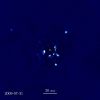 +19 +4
+19 +4Astronomers are using AI to discover fledgling planets
The number of known exoplanets has veritably exploded in recent years, with more than 5,000 worlds beyond our solar system now known. But there’s a catch: The worlds we’ve found are typically those easiest to detect. It’s only as techniques and technology improve that astronomers are able to discover planets that are harder to see.
-
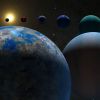 +11 +3
+11 +3Artificial intelligence to aid future exoplanet hunt
A new challenge invites Artificial Intelligence (AI) and machine learning experts to join astronomers in the quest to discover and understand planets outside the solar system, also known as extrasolar planets or "exoplanets."
-
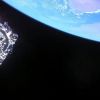 +19 +1
+19 +1Webb telescope discovers oldest galaxies ever observed
The James Webb Space Telescope has discovered the four most distant galaxies ever observed, one of which formed just 320 million years after the Big Bang when the universe was still in its infancy, new research said on Tuesday.
-
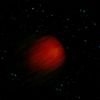 +23 +4
+23 +4Webb telescope finds a 'hot Jupiter' exoplanet that defies expectations
The atmospheres of gas giant planets across the Milky Way galaxy can be very different from those in our solar system, the James Webb Space Telescope has found. Observations of the distant exoplanet HD149026b, also known as Smertrios, revealed that the planet's atmosphere is rich in what scientists call heavy elements, essentially anything other than hydrogen and helium. In Smertrios' atmosphere, the James Webb Space Telescope detected high concentrations of carbon and oxygen.
-
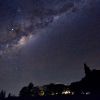 +22 +5
+22 +5It's a bird! It's a plane! It's a pretty neat planetary viewing!
This week, you have an opportunity to acquaint yourself with some of our solar system neighbors and reduce some of your screen time.
-
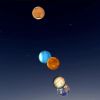 +22 +6
+22 +6When, where, and how to see the rare alignment of 5 planets in the night sky this month
Don't miss the planet parade taking place at the end of March. Jupiter, Mercury, Venus, Uranus, and Mars are set to align in an arc formation on the nights of March 25 through 30, alongside the moon. Jupiter may sink into the sunset and get lost in sunlight after the 28th, though, so aim to see this relatively rare cosmic event by then. If you want to spot all five planets in one night, timing, dark skies, and a clear view of the horizon are key.
-
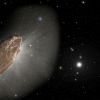 +4 +1
+4 +1Scientists explain alien comet 'Oumuamua's strange acceleration
The quirky comet 'Oumuamua, the first interstellar object found visiting our solar system, has been the subject of fascination since being spotted in 2017, including its curious acceleration as it hurtled away from the sun.
-
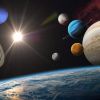 +19 +5
+19 +55 planets will align in a 'planetary parade' next week. Here's how and when to see it.
Though we all have differences, there’s one commonality that has prevailed for all of humanity: we are all floating on a rock, flying through outer space at over a million miles an hour. Thanks to the rapid advancement of technology in the past century, we can observe more of the Universe than ever before.
-
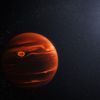 +16 +4
+16 +4James Webb Space Telescope spies hot, gritty clouds in skies of huge exoplanet with 2 suns
NASA's prolific James Webb Space Telescope (JWST) has made yet another stunning discovery. The pioneering observatory just peered directly into the atmosphere of a giant exoplanet with two suns (like Tatooine from "Star Wars") known as VHS 1256 b(opens in new tab) — and found a roiling world with turbulent clouds made of silicates, similar to sand here on Earth, as announced in a recently published article in Astrophysical Journal Letters
-
 +16 +3
+16 +3Satellites Pose 'Unprecedented Global Threat', Scientists Warn. Here's Why.
Astronomers on Monday warned that the light pollution created by the soaring number of satellites orbiting Earth poses an "unprecedented global threat to nature".
-
 +3 +1
+3 +1A bright comet is heading towards Earth and could outshine the stars in the sky, say astronomers
Comet C/2023 A3 last visited Earth about 80,000 years ago. When it visits us in 2024, it could be about 100 times brighter than the green comet.
-
 +13 +2
+13 +2China and France prepare to launch satellite to hunt for gamma-ray bursts
France is set to send a pair of advanced science instruments to China in preparation for launch of a joint space observatory. The Space-based multi-band astronomical Variable Objects Monitor (SVOM) is a collaboration forged in 2014 between the China National Space Administration (CNSA) and the Centre national d’études spatiales (CNES).
-
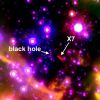 +21 +3
+21 +3A mysterious object is being dragged into the supermassive black hole at the Milky Way’s center
For two decades, scientists have observed an elongated object named X7 near the supermassive black hole at the center of the Milky Way and wondered what it was. Was it pulled off a larger structure nearby? Was its unusual form the result of stellar winds or was it shaped by jets of particles from the black hole?
-
 +12 +1
+12 +1Night skies are getting 9.6% brighter every year as light pollution erases stars for everyone
For most of human history, the stars blazed in an otherwise dark night sky. But starting around the Industrial Revolution, as artificial light increasingly lit cities and towns at night, the stars began to disappear. We are two astronomers who depend on dark night skies to do our research. For decades, astronomers have been building telescopes in the darkest places on Earth to avoid light pollution.
-
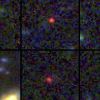 +2 +1
+2 +1James Webb Telescope discovers six massive 'universe breaker' galaxies
Astronomers have detected what appear to be six massive and very ancient galaxies, a discovery they say could upend our understanding of how galaxies formed at the very beginning of the universe. While the new James Webb Space Telescope has already spotted even older galaxies, it’s the size and maturity of these six apparent mega-galaxies that have stunned scientists.
-
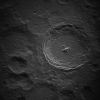 +21 +3
+21 +3A prototype planetary radar system captured the highest resolution images of the Moon ever
Using two powerful radar-based ground installations, a joint team of scientist from the National Radio Astronomy Observatory (NRAO), the Green Bank Observatory (GBO), and Raytheon Intelligence &...
-
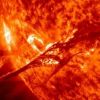 +2 +1
+2 +1WATCH: Huge portion of the Sun breaks off from the surface, swirls around its North Pole
Researchers at NASA were baffled when they saw a piece of the Sun, breaking off from its surface and creating a vortex around its North Pole. Scientists are still trying to understand what impact this event will have on Earth, and when.
-
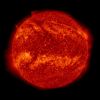 +20 +2
+20 +2The sun just did something weird, and 3 other space stories you may have missed this week
Space is very big and quite often, very weird. Last week, an image captured by NASA's Reconnaissance Orbiter looked just like a bear, and "The Green Comet" reached its closest point to Earth in 50,000 years. This week we’ve got a whole new set of developments. Here’s what you may have missed.
-
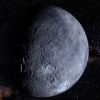 +3 +1
+3 +1This dwarf planet has a ring instead of a moon, and scientists don't know why
Recent telescope data revealed that a small planet in the far reaches of our solar system has a dense ring round it. And scientists are baffled as to why. The planet, Quaoar, is one of roughly 3,000 small planets that orbit the sun beyond Neptune, and at 690 miles (1,110-kilometers) wide, it’s about the seventh largest, with Pluto and Eris ranking as the biggest.
-
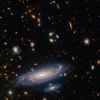 +16 +3
+16 +3This James Webb Space Telescope image shows spiral galaxy in stunning detail
A newly released image from NASA's James Webb Space Telescope shows a crowded field of galaxies and stars, with a distant spiral galaxy standing out in stunning detail. The large galaxy that sits at the bottom of the image, LEDA 2046648, is so clear in the James Webb Space Telescope (JWST or Webb) image that its individual spiral arms are visible.
Submit a link
Start a discussion




















